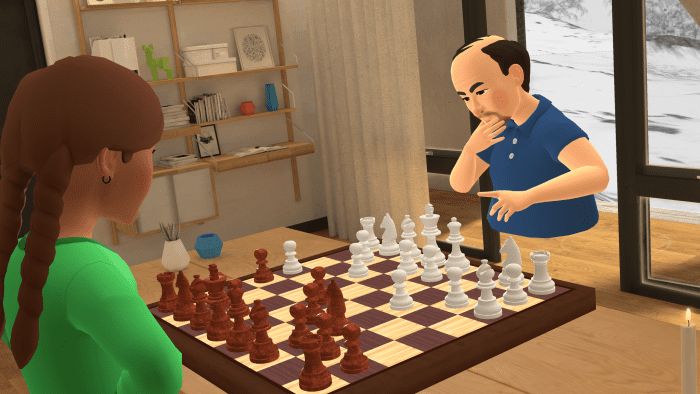Carl Hortsmann found a way to take his 87-year-old father scuba diving on the Great Barrier Reef, go skiing for the first time and bring him on a tour of his old neighborhood in Union, N.J., where he grew up – all with the help of virtual reality.
As part of a first phase of a clinical trial with the University of California at Santa Barbara, the Hortsmann family enjoyed a new way to connect with the elder Hortsmann, Ted, who lives at an assisted-living facility in Massachusetts.
“It was a great experience. My father was really blown away by it,” said Carl Hortsmann, 61. “He keeps referencing it and wanting to talk about it and do it again.”
“I was so engrossed in the activity that I didn’t even think about the headset. I’m going to get a set of my own so when my family travels, they can take me along with them,” said Ted Hortsmann. “I got that much enjoyment out of it.”
The first phase of the clinical trial found notable emotional benefits for older adults. Users experienced decreased negative emotions and feelings of isolation, increased positive emotions and engagement with their family members, and overall improved quality of life. Family members reported similar mental health benefits along with significant decreases in caregiver guilt after using the VR platform with their loved ones.
Virtual reality products got a boost from the COVID-19 pandemic when people wanted to be remote but still have social connections, said Anshel Sag, principal analyst with Moor Insights & Strategy.
A second phase of the study is currently under way with funding from the National Institute on Aging (NIA), a division of the National Institutes of Health (NIH).
Even beyond the pandemic, there’s demand for older adults to connect with family and friends through technology, Sag said.
“There is an ever-growing market for senior citizens to communicate with their families, especially as traveling gets harder the older you get. The market size is growing as baby boomers have retired and are getting older,” Sag said.
Read: Want to age in place? You may have a robot keeping you company.
Moving into a senior living community can bring on feelings of depression in older adults, with 40% of senior living residents experiencing depression or isolation during their stay. Research has shown that social isolation is as detrimental to health as smoking 15 cigarettes a day.
“Social isolation is still high, even at senior living communities,” Rendever CEO and co-founder Kyle Rand said. “People are living right next door to each other but not forming community. A large demographic also wants to age in place. There’s a large risk or trap of social isolation in that.”
The technology, called Alcove, is a consumer VR product publicly available to families at home through their own VR headsets. Consumers can download Alcove for free. Rendever Inc., a Somerville, Mass.-based company, acquired Alcove this month from its co-development partner AARP.
By bringing Alcove in-house, Rendever said it wants to expand the product’s reach to create a better aging experience for seniors worldwide, regardless of where they live.

Courtesy: Rendever Inc.
While Rendever has traditionally focused on older adults living in senior living communities, hospice organizations, and patients in hospitals, the acquisition of Alcove will accelerate Rendever’s mission to forge virtual communities and expand the use of the technology.
Through the acquisition, Rendever better supports the aging population by bringing the shared experiences to the millions of seniors at home, along with their families and caregivers.
“With Alcove, anybody can get a taste of the Rendever experience from the comfort of their home, downloaded at a moment’s notice through the Quest store. Creating Alcove with AARP allowed us to bring more joy to the world’s aging population, and we’re excited to carry on that mission even more hands-on,” said Rand.
It is difficult to predict the potential market size, but Sag said he sees it growing to reach into the hundreds of millions dollars shortly “as both the size of the senior citizen population grows, and so does availability of VR headsets.”
“Something to consider is that as people get older, their eyesight tends to go and they don’t need high resolution headsets or experiences and are more than happy and amazed with what’s available today,” Sag said.
Read: What robots will mean for your retirement
“The next phase of growth is the opportunity to blur the line between senior living and aging in place,” Rand said. “Virtual reality is a key tool to defy these physical barriers and form community. It’s a tool that enables community building. As one thinks of the aging process, there’s no one-size-fits-all. This is a tool in the toolbox.”
